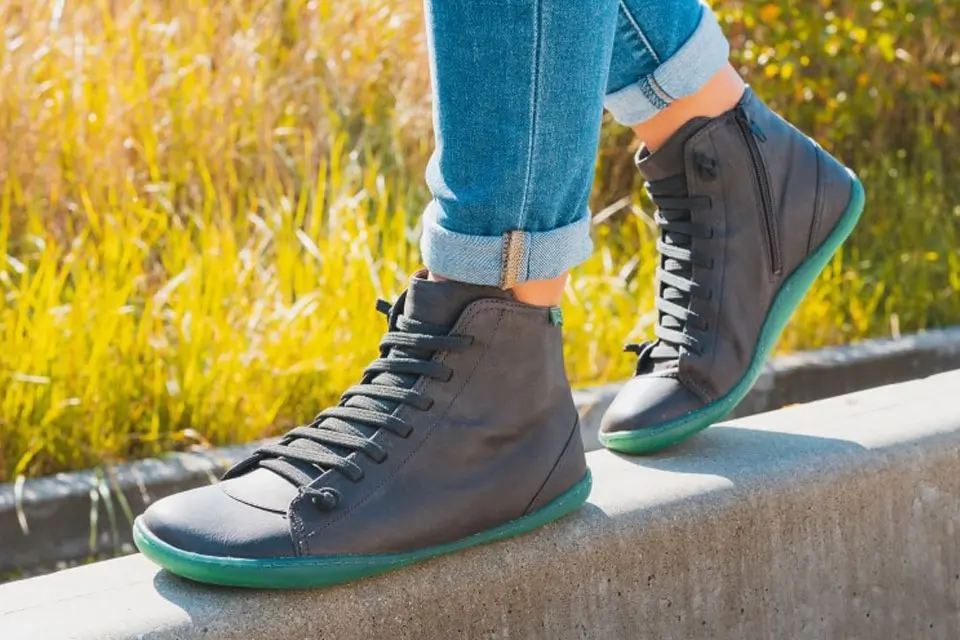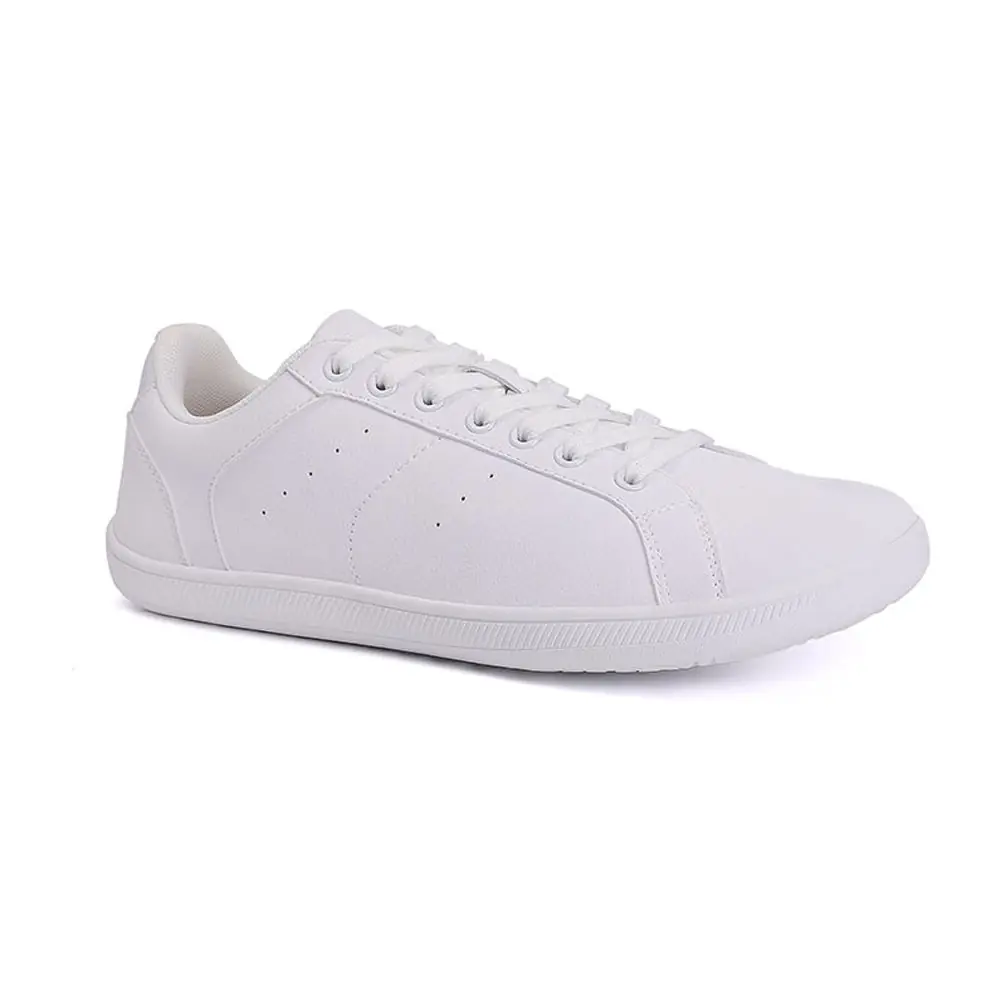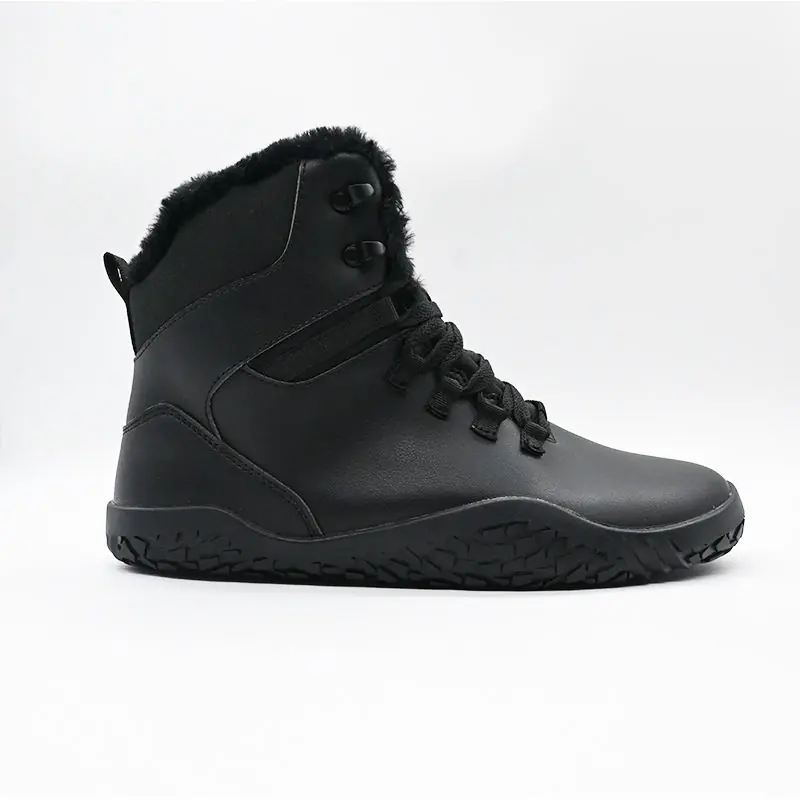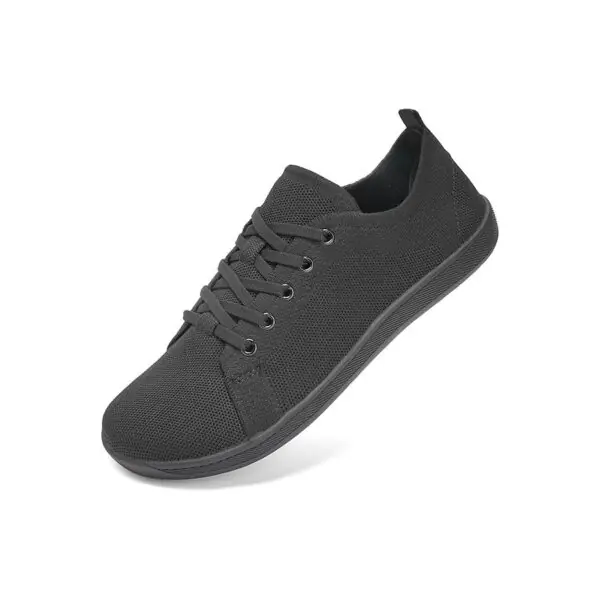
Can You Hike in Barefoot Shoes
In recent years, barefoot shoes have gained popularity among outdoor enthusiasts, leading many to wonder: can you hike in barefoot shoes? This comprehensive guide explores the possibilities, benefits, and considerations of using minimalist footwear for hiking adventures. Whether you’re a seasoned hiker or just starting out, understanding the role of barefoot shoes in hiking can open up new perspectives on your outdoor experiences.
Table of Contents
Understanding Barefoot Shoes for Hiking
Before we delve into hiking with barefoot shoes, it’s crucial to understand what sets these minimalist shoes apart from traditional hiking boots.
What Are Barefoot Hiking Shoes?
Barefoot hiking shoes, also known as minimalist hiking shoes, are designed to mimic the experience of walking barefoot while providing essential protection from terrain hazards. Key features include:
- Zero-drop sole: No height difference between heel and toe
- Thin, flexible sole: Allows for better ground feel
- Wide toe box: Permits natural toe splay
- Lightweight construction: Reduces fatigue on long hikes
The Philosophy Behind Barefoot Hiking
The concept of barefoot hiking stems from the idea that our feet are naturally designed for efficient movement across various terrains. Proponents argue that traditional hiking boots may weaken foot muscles and alter natural biomechanics over time.

Benefits of Hiking in Barefoot Shoes
Hiking in barefoot shoes offers several potential advantages:
- Enhanced Proprioception: Better ground feel improves balance and terrain awareness.
- Strengthened Foot Muscles: Minimalist design encourages natural foot movement and muscle engagement.
- Improved Agility: Lightweight construction allows for quicker, more precise movements on the trail.
- Reduced Fatigue: Less weight on your feet can lead to decreased energy expenditure over long distances.
- Natural Gait: Encourages a more natural walking pattern, potentially reducing strain on joints.
Challenges and Considerations
While barefoot hiking shoes offer benefits, they also present unique challenges:
- Reduced Protection: Thinner soles mean less buffer between your feet and sharp objects or rough terrain.
- Adaptation Period: Transitioning from traditional hiking boots requires time and patience.
- Limited Support: Minimal arch support and ankle stability may be an issue for some hikers.
- Weather Vulnerability: Less insulation and water resistance compared to traditional hiking boots.
Choosing the Right Barefoot Hiking Shoes
Selecting the appropriate barefoot shoes for hiking is crucial for a positive experience. Consider the following factors:
Sole Thickness and Flexibility
Look for a balance between ground feel and protection. A sole thickness of 3-10mm is common in barefoot hiking shoes.
Tread Pattern
Opt for shoes with adequate traction for various terrains. Some barefoot shoes offer more aggressive tread patterns for challenging trails.
Upper Material
Choose materials that offer breathability and quick-drying properties. Options include mesh, lightweight synthetics, or treated leather.
Fit and Toe Box
Ensure a snug fit around the midfoot and heel with ample room in the toe box for natural toe splay.
Water Resistance
Consider water-resistant or waterproof options for wet conditions, but be aware that these may reduce breathability.
Top Barefoot Hiking Shoe Options
Several brands offer excellent barefoot hiking shoe options:
- White Leather Men’s Barefoot Hiking Shoes: Combines style with functionality for various terrains.
- Waterproof Minimalist Men’s Barefoot Boots: Ideal for challenging weather conditions while maintaining a minimalist design.
- Zero Drop Men’s Weightlifting Barefoot Hiking Boots: Versatile option suitable for both hiking and strength training.
- Xero Shoes TerraFlex: Known for excellent traction and durability.
- Vivobarefoot Tracker FG: Offers a good balance of protection and ground feel.

Transitioning to Barefoot Hiking
If you’re new to barefoot shoes or minimalist hiking, a gradual transition is crucial:
- Start Small: Begin with short, easy hikes on familiar terrain.
- Strengthen Your Feet: Incorporate foot-strengthening exercises into your routine.
- Gradual Increase: Slowly extend the duration and difficulty of your hikes.
- Listen to Your Body: Pay attention to any discomfort or pain and adjust accordingly.
- Alternate Footwear: Mix barefoot shoes with traditional hiking boots initially.
Barefoot Hiking Techniques
Hiking in barefoot shoes may require adjustments to your technique:
- Foot Placement: Be more mindful of where you step to avoid sharp objects.
- Shorter Strides: Take shorter, more frequent steps for better stability.
- Engage Your Toes: Use your toes to grip and navigate uneven terrain.
- Uphill Technique: Lean slightly forward and land on your midfoot or forefoot.
- Downhill Technique: Maintain a slight bend in your knees and take shorter steps.
Terrain Considerations
Different terrains present unique challenges for barefoot hiking shoes:
Rocky Trails
- Pros: Enhanced ground feel for better balance
- Cons: Increased risk of stone bruising
Soft Forest Floors
- Pros: Comfortable and natural feeling
- Cons: Potential for hidden sharp objects
Sandy Beaches
- Pros: Excellent for strengthening foot muscles
- Cons: Sand can be abrasive on bare skin
Mountain Terrain
- Pros: Improved agility on technical sections
- Cons: Less protection against sharp rocks and cold temperatures
Weather and Seasonal Factors
Consider how barefoot hiking shoes perform in various weather conditions:
Summer Hiking
Barefoot shoes excel in warm weather due to their breathability and lightweight design.
Winter Challenges
Cold temperatures and snow can be problematic due to minimal insulation. Consider weatherproof socks or winter-specific minimalist boots.
Rainy Conditions
Look for water-resistant or quick-drying barefoot shoes to maintain comfort in wet conditions.
Long-Distance Hiking in Barefoot Shoes
Embarking on long-distance hikes with barefoot shoes requires careful preparation:
- Gradual Training: Build up to longer distances over time.
- Foot Care: Pay extra attention to blister prevention and foot maintenance.
- Backup Plan: Consider carrying traditional hiking shoes for challenging sections.
- Weight Distribution: Ensure your backpack is well-balanced to minimize strain on your feet.
Barefoot Hiking for Different Foot Types
Barefoot hiking shoes can accommodate various foot types, but considerations vary:
High Arches
- May benefit from the increased ground contact
- Might require a longer adaptation period
Flat Feet
- Can help strengthen the natural arch
- May need additional support during the transition phase
Wide Feet
- Often find barefoot shoes more comfortable due to the wide toe box
- Look for models specifically designed for wide feet
Comparing Barefoot Hiking Shoes to Traditional Hiking Boots
Understanding the differences between barefoot hiking shoes and traditional hiking boots can help you make an informed decision:
| Feature | Barefoot Hiking Shoes | Traditional Hiking Boots |
|---|---|---|
| Weight | Very light | Heavier |
| Ankle Support | Minimal to none | Substantial |
| Ground Feel | High | Low |
| Protection | Minimal | High |
| Flexibility | Very flexible | Rigid |
| Break-in Period | Short or none | Often lengthy |
| Waterproofing | Limited options | Many waterproof choices |
The Impact on Hiking Performance
Hiking in barefoot shoes can affect your performance in several ways:
Positive Impacts
- Improved Balance: Enhanced proprioception can lead to better stability on uneven terrain.
- Increased Agility: Lightweight design allows for quicker movements and easier navigation of obstacles.
- Enhanced Foot Strength: Regular use can strengthen foot muscles, potentially improving overall hiking endurance.
Potential Drawbacks
- Reduced Speed: Initially, you may need to slow down to navigate terrain more carefully.
- Increased Fatigue: Until your feet adapt, you might experience more tiredness in your foot muscles.
- Limited Load-Bearing: May not be suitable for very heavy backpacks or extreme terrain.
Barefoot Hiking and Injury Prevention
While barefoot hiking shoes can potentially reduce certain injuries, they also present unique risks:
Potential Benefits
- Reduced Risk of Ankle Sprains: Lower to the ground design may decrease the risk of rolling ankles.
- Improved Proprioception: Better ground feel can help prevent trips and falls.
Risks to Consider
- Stone Bruising: Thinner soles provide less protection against sharp rocks.
- Overuse Injuries: Transitioning too quickly can lead to strains in foot and calf muscles.
Environmental Impact of Barefoot Hiking Shoes
Considering the environmental aspect of your hiking gear is increasingly important:
Sustainability Factors
- Material Usage: Barefoot shoes often use fewer materials, potentially reducing environmental impact.
- Durability: High-quality barefoot shoes can be very durable, reducing the frequency of replacement.
- Eco-Friendly Options: Many barefoot shoe brands prioritize sustainable and recyclable materials.
Caring for Your Barefoot Hiking Shoes
Proper care can extend the life of your barefoot hiking shoes:
- Clean Regularly: Remove dirt and debris after each hike.
- Air Dry: Allow shoes to dry naturally, avoiding direct heat sources.
- Rotate Pairs: If possible, alternate between two pairs to allow proper drying and recovery.
- Check for Wear: Regularly inspect the soles and upper for signs of excessive wear.
The Future of Barefoot Hiking
As interest in barefoot and minimalist hiking grows, we can expect to see:
- Advanced Materials: Development of materials that offer better protection while maintaining flexibility and ground feel.
- Hybrid Designs: Shoes that blend traditional hiking boot features with barefoot principles.
- Customization: Increased options for personalized fit and features in barefoot hiking shoes.
Making the Decision: Are Barefoot Hiking Shoes Right for You?
Deciding whether to hike in barefoot shoes depends on various factors:
- Your Hiking Style: Consider the types of trails and distances you typically hike.
- Foot Health: Consult with a podiatrist, especially if you have existing foot conditions.
- Personal Preferences: Weigh the importance of ground feel versus protection.
- Fitness Level: Assess your overall foot strength and hiking experience.
- Willingness to Adapt: Be prepared for a transition period and potential changes in hiking technique.
Conclusion: Can You Hike in Barefoot Shoes?
In conclusion, can you hike in barefoot shoes? The answer is a resounding yes, but with important caveats. Barefoot hiking shoes offer unique benefits such as enhanced ground feel, improved foot strength, and a more natural hiking experience. However, they also require careful consideration of terrain, weather conditions, and individual foot health.
Successful barefoot hiking demands a gradual transition, proper technique, and the right shoe selection for your specific needs. It’s not suitable for everyone or every hiking situation, but for many, it can open up a new world of sensory-rich outdoor experiences.
If you’re intrigued by the concept of barefoot hiking, start by incorporating short walks in barefoot shoes into your routine. Gradually increase the difficulty and duration of your hikes as your feet adapt. Remember to listen to your body and be patient with the transition process.
For those ready to explore the world of barefoot hiking, consider exploring options like the White Leather Men’s Barefoot Hiking Shoes or Waterproof Minimalist Men’s Barefoot Boots to find the perfect fit for your hiking adventures.
Ultimately, whether you choose to hike in barefoot shoes or stick with traditional hiking boots, the most important factor is that you’re out there enjoying the trails and connecting with nature. Happy hiking!

FAQs
Are barefoot hiking shoes suitable for beginners?
Barefoot hiking shoes can be suitable for beginners, but it’s crucial to start with shorter, easier hikes and gradually build up distance and difficulty. Proper transition and foot strengthening exercises are essential for a positive experience.
How long does it take to adapt to hiking in barefoot shoes?
The adaptation period varies for each individual but typically ranges from a few weeks to several months. It’s important to listen to your body and progress gradually to avoid overuse injuries.
Can I use barefoot hiking shoes for long-distance treks?
While some experienced hikers successfully use barefoot shoes for long-distance treks, it’s generally recommended to build up to longer distances gradually. For multi-day hikes, consider bringing a pair of traditional hiking boots as a backup.
Are barefoot hiking shoes waterproof?
Some barefoot hiking shoes offer water-resistant or waterproof options, but many prioritize breathability over water resistance. If you frequently hike in wet conditions, look for specifically designed waterproof minimalist hiking shoes or consider waterproof socks.
How do I choose the right size for barefoot hiking shoes?
When selecting barefoot hiking shoes, ensure there’s enough room in the toe box for your toes to spread naturally. The midfoot and heel should fit snugly. Many brands offer detailed sizing guides, and it’s often helpful to try on shoes later in the day when your feet are slightly swollen.
Can barefoot hiking shoes help with foot problems like plantar fasciitis?
While some people find relief from foot problems when transitioning to barefoot shoes, others may experience increased discomfort. It’s essential to consult with a podiatrist or foot specialist before using barefoot hiking shoes if you have existing foot conditions.
